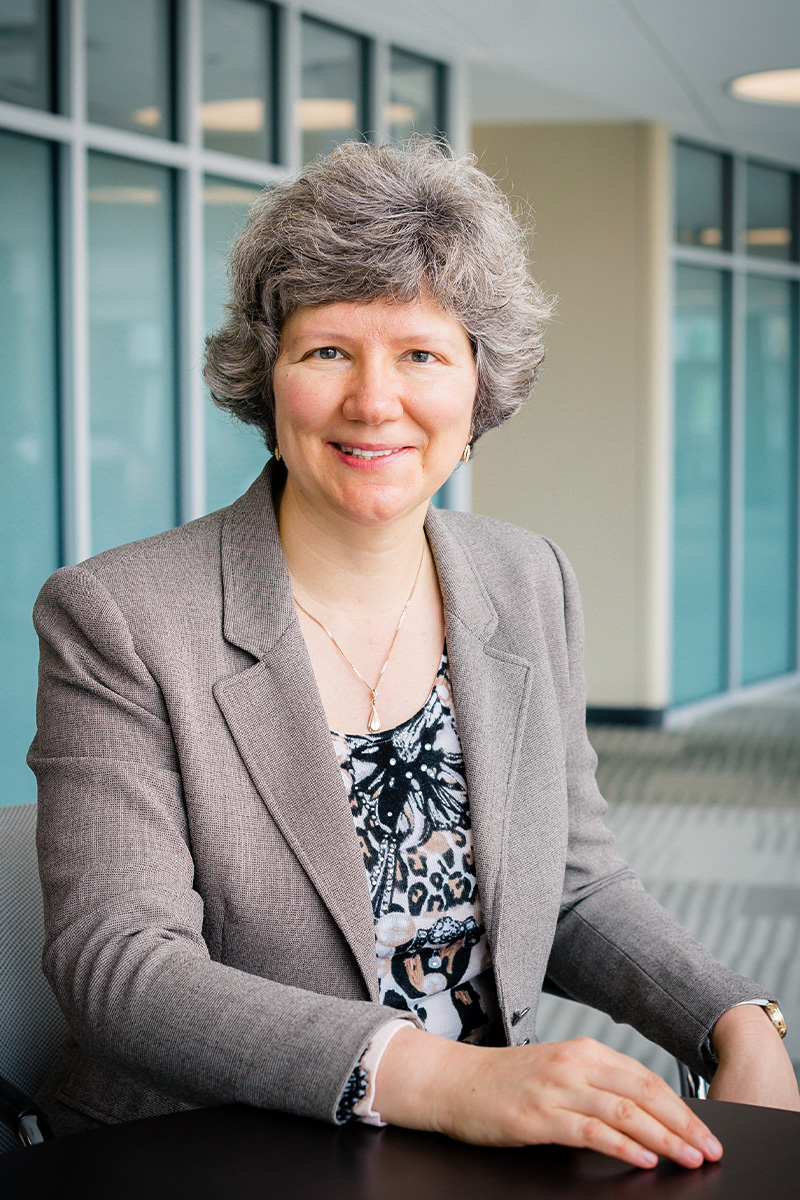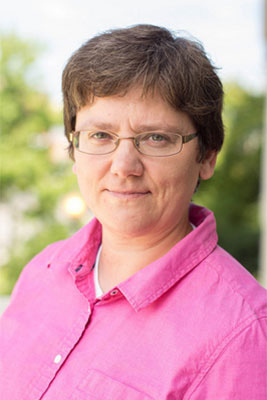

Drug discovery, particularly for the treatment of cancer, is a particular focus of the Department of Chemistry. More than a third of chemistry faculty hold positions as scientists in the O’Neal Comprehensive Cancer Center at UAB.
Eugenia Kharlampieva, Ph.D., and Veronika Kozlovskaya, Ph.D., are harnessing the potential of microcapsules for use in human and environmental health.
Their “intelligent” microcapsules, some of which are 60 times smaller than a red blood cell, can transform to evade obstacles, like our body’s vigilant immune system, and transport drugs to precise targets.
Kharlampieva’s lab has pioneered a layer-by-layer technology that produces hollow microcapsules made of novel polymer hydrogels. The protective coating helps prevent the immune system from planting protein warning signs on the capsules, so they avoid being tagged as foreign and destroyed. While most synthetic particles are flushed out of the bloodstream within minutes, the researchers have designed microcapsules that survive for hours. They also have improved their aim, designing capsules that break down at a specific acidity level, meaning they hold onto their payload until they reach the highly acidic environment inside cancer cells, for example.
Another type of capsule can be filled with potent doses of cancer drugs and then tracked through the body using positron emission tomography, or PET, imaging. Once the tiny bubbles congregate in a tumor, a dose of ultrasound can trigger the microcapsules to rupture and release the drugs. Other microcapsule variants can carry antioxidant compounds, which scavenge molecules that damage cells in diseases including diabetes, atherosclerosis, Alzheimer’s disease, kidney disease, and cancer. One day, the hydrogel coating might help ward off immune-system attacks against insulin-producing cells transplanted into patients to treat type 1 diabetes.
Meanwhile, other researchers in the Department of Chemistry are pointing the way to new types of drug therapy. Sadanandan Velu, Ph.D., is developing novel compounds that target faulty voltage-gated sodium channels in cells near tumors to prevent cancer from metastasizing — spreading to the rest of the body.
As part of their annual expeditions to the Antarctic Peninsula, Biology Professors Chuck Amsler, Ph.D., and James McClintock, Ph.D., have spent the past two decades investigating the defensive mechanisms of marine algae, sponges, and other invertebrate species that make their home in Antarctic waters. The subject is of great scientific value in its own right, but these defensive chemicals also hold promise for humans, too. Over the years, the team has solved the chemical structures of some 24 compounds and tested about 1,000 extracts of organics. That work has identified two promising natural compounds that are being studied as potential drugs: a protein found in an Antarctic red algae that is active against the H1N1 flu virus, and a smaller compound the research team named palmerolide in honor of Palmer Station that has potent activity against melanoma skin cancer.
In 2016, the researchers reported a third such discovery, a compound isolated from Dendrilla membranosa that is remarkably effective against Methicillin-resistant Staphylococcus aureus, or MRSA.
Biology Professor Steven Austad, Ph.D., Protective Life Endowed Chair in Healthy Aging Research, also looks to the sea to identify potential new drugs. Austad’s lab studies extremely long-lived animals such as the ocean quahog, which can reach 500 years, and the freshwater hydra. These kinds of studies are a way to quickly identify genes that could be targets for new drugs to keep people healthier longer.